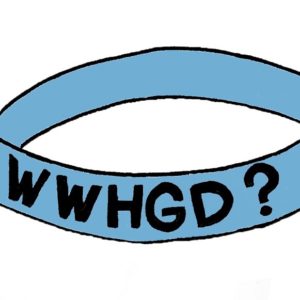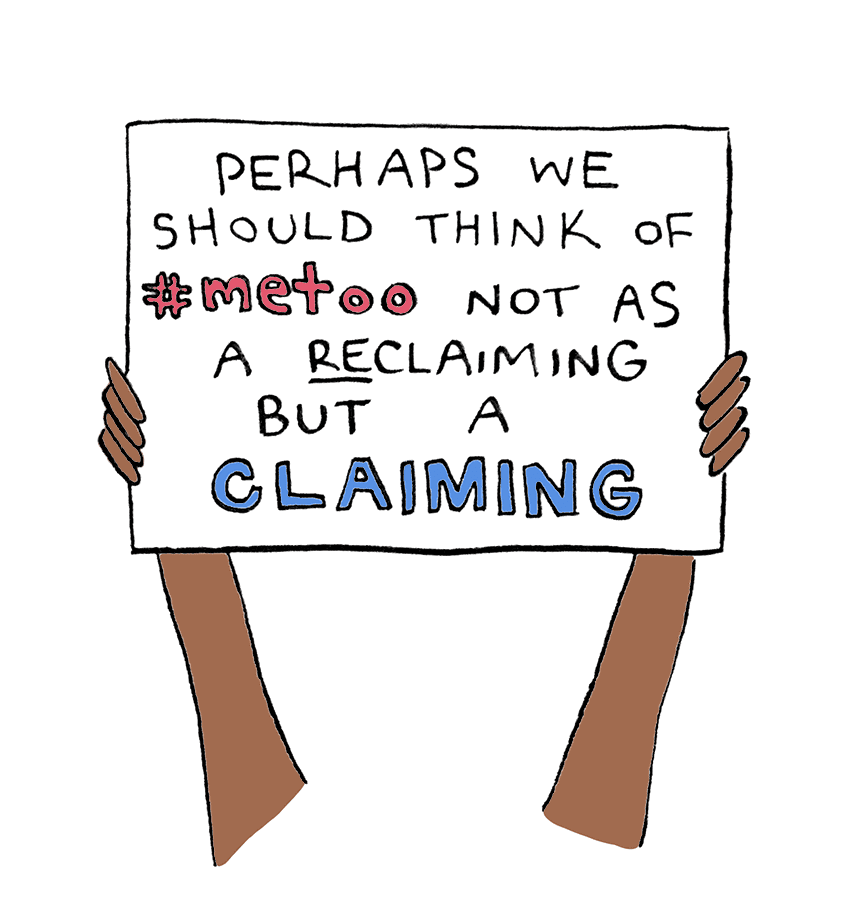
You can keep your Jesus bracelets with their WWJD reminders. I’m getting a bracelet that asks WWHGD: What Would Hannah Gadsby Do?
Ever since I watched Nanette, her one-hour comedy show that everyone you know is probably telling you to watch (they’re right; you should), I haven’t been able to get Hannah out of my mind. It’s sort of like what happened after I watched Hamilton, and for the same reason: Hamilton is a musical the way Nanette is a stand-up routine. They both transcend their genre to the point that they’ve transformed their genre.
Nanette makes us laugh, absolutely, and with the kind of insight that resonates well after the chuckles have subsided. You’ll never hear a teacup clink into its saucer the same way again. But Gadsby’s show also calls out the world for its deference to the sacrosanct image of the male genius, whose suffering, we’re told, produces great art. She reminds us that often, if not always, it’s the women and children around these artists who also suffer. They are the collateral damage in the male artist’s struggle to achieve mastery over his medium.
Never before have I seen an art history degree put to such good use as when she talks about how Picasso’s treatment of women is excused because his work transformed the art world: “Cubism,” Gadsby drawls, with a Tasmanian accent and a dollop of disdain, “changed everything,” and so it shouldn’t matter that Picasso claimed—at age forty-two—that his affair with a seventeen-year-old girl was perfect, because they were both in their prime.
“No woman is at her prime at seventeen,” Gadsby rages, and we laugh when she says it because it’s true and because we’ve all grown up with versions of these stories, which justify the appetites of powerful men. Picasso, Gadsby says, had a mental illness: a mental illness called misogyny.
The Picasso story comes towards the end of the show, but it beautifully links with all that comes before it. Nanette is, among other things, brilliantly written; it is a monologue that I would like to read in order to better appreciate its writerly moves. You start Nanette thinking that it’s a standard stand-up, with anecdotes that build to punchlines, then move to the next “bit.” But along the way, you start to realize that these “bits” have become a much bigger story; the monologue has a beginning, middle, and end.
You’ll hear people talk about how Nanette is a show about comedy that dismantles comedy, that it’s the show in which Gadsby announces her decision to leave comedy. It is, indeed, quite a “meta” performance. It is a show about itself, about the power of storytelling and about the realities behind the stories Gadsby tells. She points out that the punchlines of jokes stop the story in the middle because that’s where the humor is, usually. As the show goes on, however, she gives us the real endings of the stories she tells rather than crafted punchlines.
Towards the end of the monologue, she completes the story behind an earlier punchline, and then mentions several other real-life incidents, all of them violent: childhood abuse, a beating by a man enraged that she’s a “lady faggot,” a rape by two men. She doesn’t go into detail about any of these events—a starkness that renders them more powerful—and I wondered, as I listened to her list of assaults, if the women in the audience were thinking the same thing I was: that almost every woman I know has a version of that list.
It is a list made more terrifying for its ordinariness, so much so, in fact, I am sometimes amazed there aren’t more dead men in the world. It must be the case that women are less violent than men, because if men suffered at the hands of women as much as women have suffered at the hands of men, there would be blood in the streets and heads on pikes.
Women live with so much insult—from the small insult of a man who talks over you during a meeting to the violent insult of rape or assault—that we become inured to it. Nanette asks us to rip off that shell, that protective carapace women develop in order simply to get through the day. It is a necessary shell, perhaps, but it often prevents us from knowing that we are not alone.
It’s like when you have a miscarriage. You find out, afterwards, that almost everyone you know who has tried to have a baby has had a miscarriage, and that women everywhere carry that grief with them—the grief not only for the loss of the wanted child but also for the failure of our own bodies. The medical world contributes to that sense of failure in yet another insult: a woman I know who miscarried was told, as her official diagnosis, that she had an “incompetent cervix.”
What a great phrase. Because just in case she wasn’t feeling shitty enough when all she’d wanted was the banal mammalian miracle of a baby, she’s being told that her body needs some kind of remedial work, a cervix tutor.
When I was pregnant for the first time and for some reason the baby stopped growing inside me, the doctor who performed the ultrasound said, “Well, basically, you have a crappy uterus.” I lay there in the dim light, blue goo smeared across my crappy belly and cried, tears pooling into my ears. Would I find that diagnosis under “uterus, see also crappy,” or should I just search for “crappy uterus”?
Despite the crappy uterus, my baby managed to be born—weighing less than two pounds—but the doubt about my innards came rushing back when, two years later, I had a miscarriage at ten weeks, and needed to have a D&C, which meant running the gauntlet of anti-abortion protesters outside a clinic, who screamed “baby killer” at me as I walked up the sidewalk.
Those protesters yelling at my adult self sounded just like the protesters outside the clinics I went to in college, many years ago, when friends needed abortions. Optimistic in our youth, we’d thought that our marches and protests and screaming would somehow reclaim our bodies, except—as Gadsby reminds us—the world has never really thought that women’s bodies belonged to women. Perhaps we should think of #metoo not as a reclaiming but a claiming.
Who among us doesn’t have a story? I think about my women friends and think about their stories—rape, abuse, exploitation, shaming, self-abuse—partners who cheat, uncles who touched in funny places, boyfriends who knew she wanted it. it. I think about my own introduction to sex: a drunken, unwanted and unpunished violent coupling that resulted in me being called “slut” the next week in school, where the boy sat next to me in class, his varsity letter jacket slung around his shoulders. He smiled at me and I fled from class to puke in the bathroom.
Hannah Gadsby reminds us that our stories matter. In its highest form, comedy tells the truth to power, which is what Nanette does, but Gadsby takes it one step further. The truths she tells come from the anger of a woman who has, as she says, been broken and then put herself back together.
That’s why I want a What Would Hannah Gadsby Do bracelet. Not because she’s Jesus, but because she reminds us to shed our shame and let our stories put ourselves back together.
***
Rumpus original art by Cowboy Rocky.







